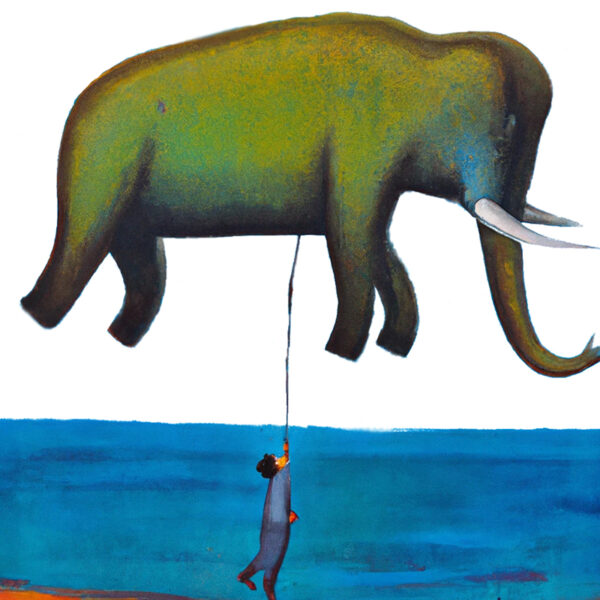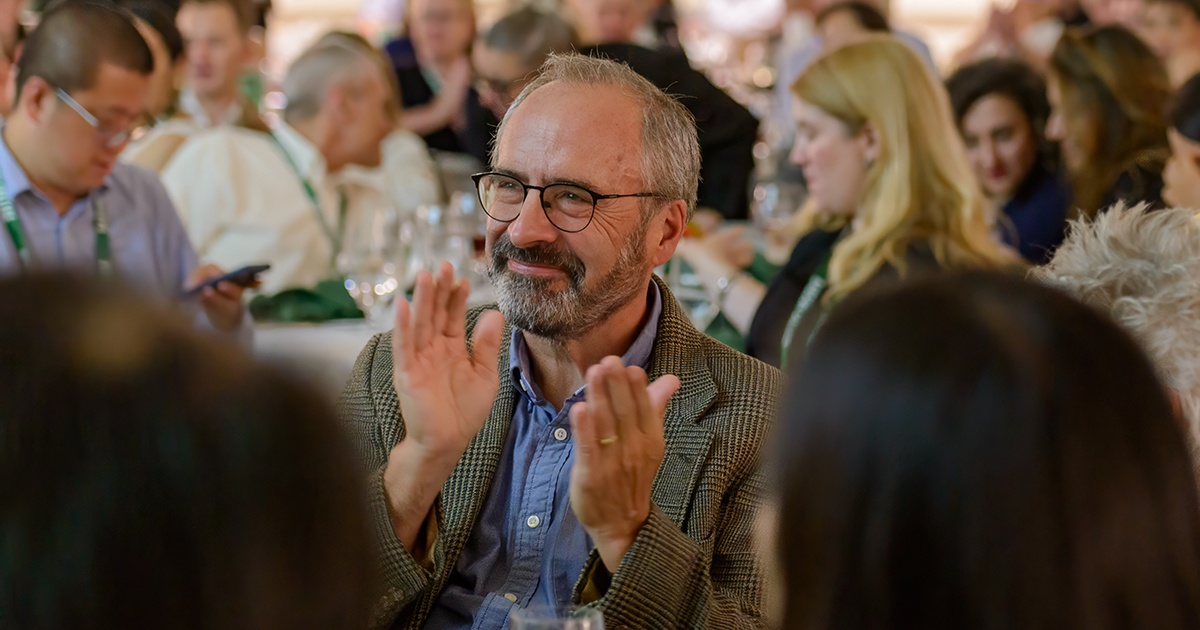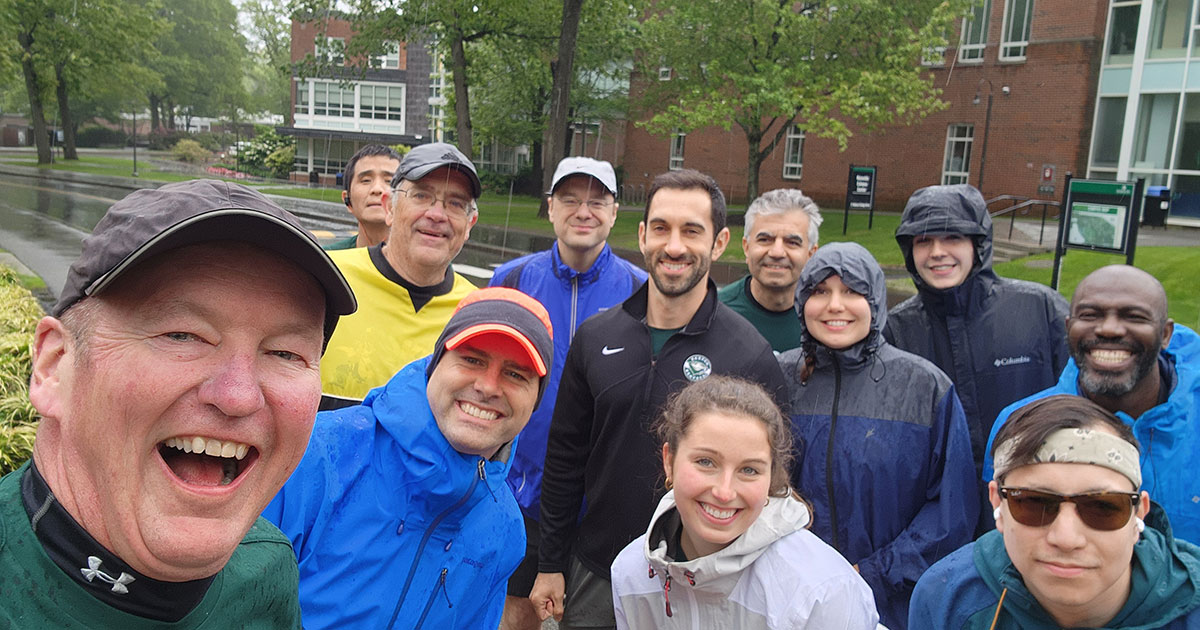The Dreams That Art Is Made of: Babson Professor Combines Data Science and AI Art

Associate Professor Davit Khachatryan’s colorful, phantastic AI art began as a way to playfully explore the possibilities granted by generative AI and image generation.

Driven by a curiosity about how AI could depict literature and human emotions, Khachatryan began using a text-to-art generative AI program, DALL–E, to create artwork inspired by lines from Rumi, Einstein and Oscar Wilde, among others.
“When I started, I wanted to see if AI could depict the depth of some of my favorite literature,” said Khachatryan
But, as the data science and machine learning professor continued playing with DALL-E, both generative AI and Khachatryan’s art evolved and grew.
“Over time, I started prompting DALL-E with my ideas and imagination,” he said.
Khachatryan’s exhibit, currently on display at the Hollister Gallery as part of BabsonARTS’ fall program, features those thought-provoking images, including one based on a dream shared on Reddit and another that evolved from a Sufi poem.
One piece depicts an enormous elephant floating above a boy holding it by a string. The boy is on his tiptoes, as though he’ll be airborne at any moment, floating away with the elephant. Another piece depicts a man sitting in front of a washing machine, a violin sits on the floor nearby.

“That one came from my own imagination,” Khachatryan said about the washing machine piece. “I manually edited it and played around with it.”
Democratizing Art
While AI produces the base images, Khachatryan is deeply involved in editing them—rearranging elements, adjusting colors, and even removing details like a misplaced rooster, in favor of adding a violin. “It’s like playing with Legos,” he remarked, explaining how the creative process fuses play and work.
What makes Khachatryan’s exhibit particularly interesting is the way he blends art with data science. Next to each piece is a booklet that contains AI’s description of the emotional landscape of the artwork, a feature Khachatryan included to explore how well AI can depict human emotions.
The addition encourages viewers to engage with the art on their own terms before discovering AI’s description.

For Khachatryan, the exhibit is not just about showcasing what AI can do, but about inviting people to explore their own reactions to art. “The biggest takeaway is for viewers to engage with the images, form their own impressions, and then, if curious, look at what AI wrote.”
Even those who’ve never painted before can enjoy creating images using generative AI.
“This is another thing that AI grants. A lot of people talk about the democratization of art through AI, now a lot of people can engage with art and play around with it,” Khachatryan said. “Obviously, it is not the same thing as taking a brush and kind of painting, but for someone like me who doesn’t know how to paint well, now I can play with this.”
The exhibit will be open to the public until October 18, offering a rare intersection of technology, art, and human emotion, all through the eyes of a data scientist-turned-artist.
Posted in Community






